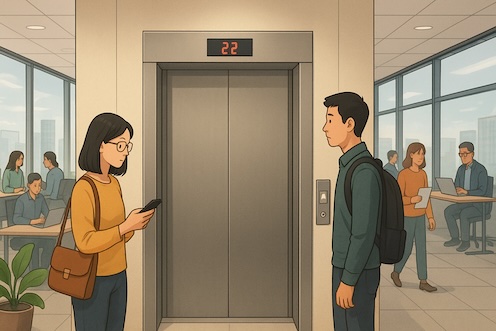In a 22 story shared office building in Zhongguancun, Beijing, the so-called "smart interconnected elevator" has become a nightmare for entrepreneurs. The building accommodates over 300 startups, and the scene of waiting for the elevator during peak hours is jokingly referred to as the "blind box opening", sometimes taking more than ten minutes. Lost files, delayed project roadshows, and even disputes over elevator advertising spaces have made this the "most dangerous social space".
The stubborn disease under the smart coat
The real problem lies in 'pseudo intelligence'. In order to create a sense of technology, the operator forcibly connected traditional elevators to the Internet of Things, but ignored three fatal flaws: rigid scheduling algorithms that cannot adapt to the fluctuations in flexible office traffic; Mixed passenger and freight traffic, with delivery vehicles and office workers congested together; The monitoring system only records the number of runs, but does not analyze the load and frequency of use. Data shows that in 2023, over 70% of complaints about shared office elevators were related to such "pseudo renovations".
Functional imbalance, absence of responsibility
The elevator in this building claims to have over 20 intelligent functions, ranging from facial recognition to contactless access, but has not upgraded its core sensors and braking system. Frequent overloading triggers protection, but shifts responsibility to tenants. However, there is no "smart failure" compensation clause in the contract, so tenants can only eat Huanglian silently.
Improvement path: prediction, partitioning, transparency
Experts propose three solutions: the "tidal" scheduling developed by Shenzhen enterprises can predict the flow of people half an hour in advance, reducing the waiting time during the morning rush hour to just over two minutes; The shared office in Tokyo has been transformed into a "partition mode", reducing the complaint rate by nearly 70%; Shanghai launches' Elevator Health Code ', which real-time displays maintenance information and enhances tenants' trust.
Beyond the significance of transportation
After the renovation was completed, tenants' evaluations showed significant improvement: the elevator "understands people's hearts better", the separation of freight and passenger transportation, and transparent maintenance made people feel at ease. This case reveals a often overlooked fact: in the context of shared office, elevators are not only cold transportation tools, but also a balance between efficiency and humanistic care.

